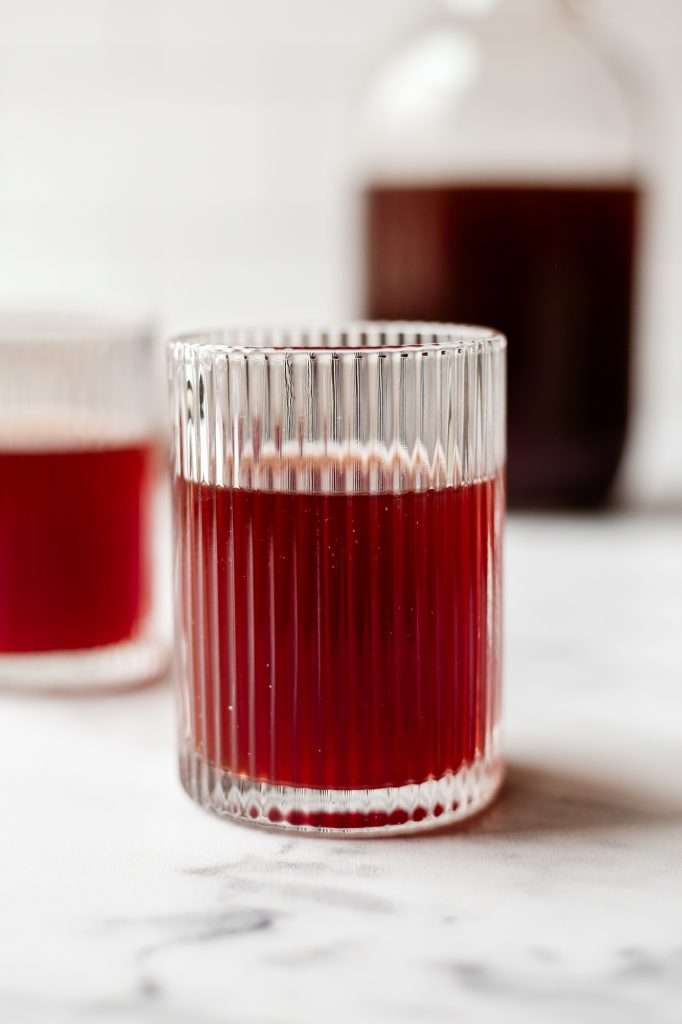- 32 fl oz pomegranate juice
- 8 fl oz citrus juice (lemon or orange)*
- 16 fl oz water
- 75 grams organic cane sugar
- 1 cinnamon stick
- 2 peppercorns
- A pinch of cardamom
- 2 slices of ginger root
- 2 grams cider yeast*
- This recipe results in a beverage with a significant amount of alcohol. if any readers here want a non-alcoholic version of this recipe, please try our Pomegranate Kombucha Recipe instead
- Clean and sanitize all of your equipment. I like to wash the jug with soap and water, allow it to air dry a bit, then rinse the jug with cheap vodka, and allow it to fully air dry.
- Once your equipment is prepped, add the citrus juice, water, sugar, and cinnamon stick to a pot and bring to a simmer. Cook for about 10 minutes until all the sugar is dissolved
- Remove the cinnamon stick.
- Add the citrus juice-sugar mixture to the 1/2 gallon jug and allow it to cool to room temp.
- Once cool, add the cider yeast, peppercorns, cardamom and ginger. Mix gently by swirling. Wait about 30 minutes for the yeast to get frothy and active.
- If using fresh juice (skip this step if using shelf-stable pasteurized juice): In the meantime, in a medium pot, heat the pomegranate juice until simmering. Remove from heat and allow to cool to room temperature. (You can place a metal pot in a bowl of ice to cool it down faster).
- Carefully using a funnel, add the pomegranate juice to the jug, leaving two inches of headspace (see pictures above).
- Cap the jug and swirl it around for about a minute.
- Remove the cap and place the airlock and stopper in the jug (see pictures above).
- After a few hours, you should notice a lot of bubbling in the bottle and activity in the airlock.
- Allow the wine to ferment for about 7-14 days until the bubbling completely stops and you no longer see any activity in the airlock. At this point, you should see a lot of sediment in the bottom of the jug.
- Racking the wine: Remove the airlock and, using a funnel, transfer the wine to a new, clean jug for aging. Be careful pouring; pour gently and in one steady pour, leaving the sediment in the bottom of the original jug.
- Cap the jug with a regular lid. Allow the wine to age at a cool room temperature or in the fridge for 2 more weeks.
- At this point, you can drink the wine as is or bottle it with honey if it is too tart.
- To Bottle the wine with honey: Clean and sterilize two 1-liter carbonation-safe bottles. Add one tablespoon of honey to each 1-liter bottle. Transfer the wine from the aging jug into the carbonation-safe bottles using a funnel, leaving any sediment in the bottom of the jug. Cap the bottles and invert gently twice to mix the honey with the wine.
- Allow to ferment in the bottles at a cool room temperature for five days, then immediately store in the fridge. (check the carbonation by carefully opening a bottle over the sink, if it is not carbonated enough, you can leave it at room temperature for seven days.)

